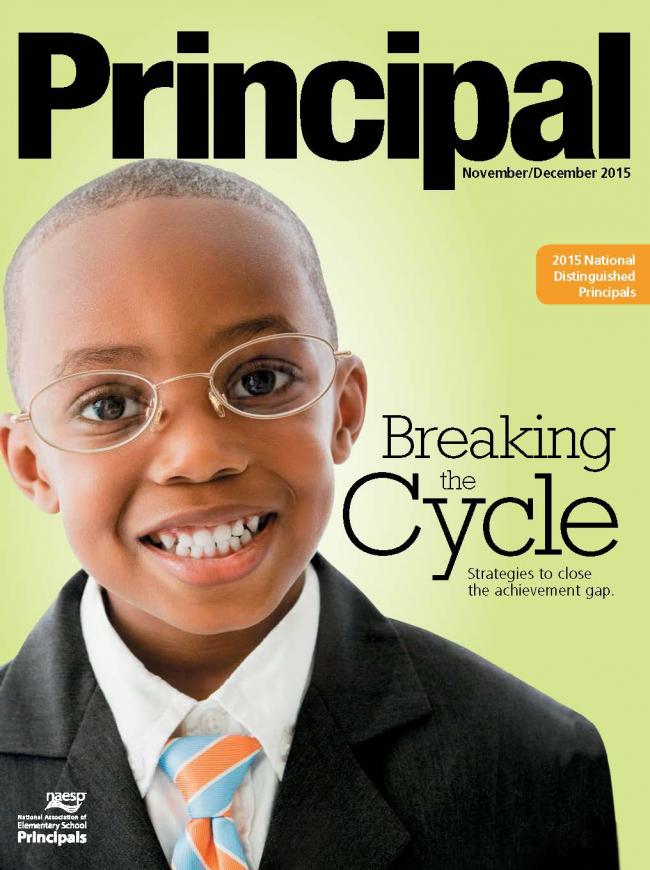
Best Practices: English Language Learners (ELL)
Articles from Principal Magazine
 Principal Magazine January/February 2014:
Principal Magazine January/February 2014:
“Experience ELL Shadowing”

Provide Teachers with an unobstructed view of how to enhance language development for English-Language Learners. By Ivannia Soto.
Read the article.
 Principal Magazine May/June 2014:
Principal Magazine May/June 2014:
“Hands-On ELL Parenting Enrichment”

Every school must overcome its own set of challenges for students to achieve academic success, and Arcadia Elementary School is no exception. Two of our community’s greatest barriers are an increasingly high language gap and a 94 percent poverty rate. Arcadia has one of the highest Hispanic populations of any other school in South Carolina, with total enrollment reaching 65 percent. Our staff recognized our need to provide additional resources not only for our students, but for our parents as well. By Chuck Bagwell.
Read the article.
 Principal Magazine November/December 2015:
Principal Magazine November/December 2015:
“It’s The Law: Teacher Fluency”

In its history, our country has periodically experienced waves of nationalism that have included English-only policies that have affected teachers as well as students. Another effect has been litigation to test the legality of the scope and application of these policies. In the subsequent periods of patriotic fervor, the courts have had to address not only the citizenship, but also the English proficiency of K-12 teachers. The following case and the accompanying question-and- answer discussion provide recent illustrations of state laws and resulting court decisions specific to the language proficiency of public school teachers. By Perry A. Zirkel
Read the article.
 Principal Magazine May/June 2015:
Principal Magazine May/June 2015:
“Comprehensive Support for Young English Learners”

At a recent meeting, a principal of a suburban elementary school said she was addressing the growing diversity of languages in her school by hiring bilingual paraprofessionals. When asked what they specifically do in the classrooms, the principal realized she wasn’t sure how to answer that question. There was no plan in place. In addition to not having a language plan, schools often leave the task of educating English-language learners ( ELLs) to specialized staff. However, one point has become clear across the field: Children who speak different languages are not just the responsibility of specialists. Schools that have the most success with diverse populations have a buildingwide or districtwide planned approach to supporting diverse languages seamlessly from preschool through the elementary years. By Karen N. Nemeth.
Read the article.
 Principal Magazine January/February 2011:
Principal Magazine January/February 2011:
“Research Report: Effective Instruction for English Language-Learners”

Research focused on instructional strategies of ELL students highlights both the complexity of the task and the importance of educators' roles in developing effective programs. Schools across the country are currently facing the challenge of increasing numbers of students identified as English-language learners (ELL). Thus, knowledge of research about effective instruction for ELLs is becoming more important. On a positive note for principals, work has been done during the past few years to pull together critical components of a large and complex research base on ELL instruction in a way that provides practical guidance.
Read the article.
Articles from Communicator
Communicator August 2016:
“Purposeful Home Visits with ELLs”
Parent engagement is key to a successful school, but it’s often hard to accomplish in a significant way. It can be especially difficult for those working in schools with a high population of English language learners, where the differences in both language and culture present unique challenges. Read more.
Communicator July 2016:
“4 Ways to Start Strong with Families”
The beginning of the school year is a hectic time for schools. Though work is to be done with teachers, staff, and the school building itself, one of the most important areas for principals is communication with families. Here are four strategies and resources principals can use to boost parent engagement at the beginning of the year. Read more.
Communicator September 2015:
“Connecting with Diverse Families Right from the Start”
Parent engagement is a positive force in elementary schools, but reaching out to families who speak different languages is not always easy. The heart of truly successful parent engagement is a commitment to connect with each and every family. These strategies for working with families of English-language learners (ELLs) will help you get your school year off to a great start with lasting benefits. Read more.
NAESP Conference Presentations
 Building School Culture
Building School Culture

Primary Presenter
Todd Nesloney - Webb Elementary School and Brad Gustafson - Greenwood Elementary School
Description
Creating an environment that staff want to work in, kids beg to be involved with, & parents are raving about, is an important job of every leader. Come learn easy ideas on how to build up school culture and create a place where everyone is valued and has a voice.